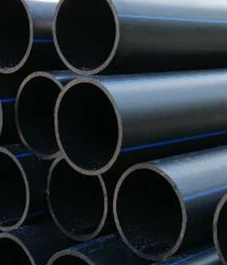Dec . 30, 2024 08:29 Back to list
Selecting the Right Type of Welding Rod for Your Project Needs
Understanding Welding Rods Types, Applications, and Best Practices
Welding rods are essential components in the field of welding, used to create strong joints between metal parts. They serve as filler materials during the welding process and can significantly influence the quality and durability of the weld. Understanding the various types of welding rods, their applications, and best practices is crucial for both amateur and professional welders.
Types of Welding Rods
Welding rods come in various types, each suited for different applications and materials. The most common types include
1. MMA (Manual Metal Arc) Rods Also known as stick electrodes, these rods are versatile and widely used for various welding applications. They are coated with a flux that protects the weld pool from atmospheric contamination. Common materials for MMA electrodes include mild steel, stainless steel, and cast iron.
2. TIG (Tungsten Inert Gas) Rods These rods are primarily used in TIG welding, where a non-consumable tungsten electrode generates the arc, and the filler rod is added manually. TIG rods can be made from materials like stainless steel, aluminum, and copper, offering excellent control and precision in welding thin sections.
3. MIG (Metal Inert Gas) Wire Although technically not a rod, MIG wire performs a similar function in the MIG welding process. It is fed automatically through a welding gun, making it suitable for high-speed production. MIG wires come in various materials and diameters, catering to different welding needs.
4. Flux-Cored Arc Welding (FCAW) Rods These are similar to MIG wires but come with a flux core that provides shielding gas during the weld, making them effective for out-of-position welding and in windy environments. FCAW rods are ideal for joining thicker materials.
Applications
Welding rods are widely used across various industries. In construction, they are vital for building strong structural frameworks. The automotive industry relies heavily on welding for assembling parts and ensuring vehicle integrity. Additionally, manufacturing sectors utilize welding rods for creating machinery and equipment, while the shipbuilding industry uses them for assembling hulls and other metal components.
welding rod

Moreover, the versatility of welding rods allows them to be used in repair and maintenance work. Whether it’s fixing machinery or making structural repairs, the right welding rod can make all the difference in creating a reliable and lasting bond.
Best Practices
To achieve optimal results when using welding rods, several best practices should be followed
1. Select the Right Rod Choosing the right type of welding rod for the material being welded is crucial. Factors to consider include the metal type, thickness, and the environment in which the weld will take place.
2. Proper Handling and Storage Welding rods can absorb moisture, which can lead to defects in the weld. Keeping them in a dry, controlled environment and using them within their shelf life is essential to maintaining their integrity.
3. Prepare the Base Material Before welding, ensure that the base metal is clean and free of contaminants such as rust, oil, or paint. Proper surface preparation enhances the quality of the weld and prevents defects.
4. Settings and Techniques Adjust the welding machine settings according to the type of rod and material being used. Familiarize yourself with techniques such as stringer beads and weave patterns to enhance the quality of the weld.
5. Safety Precautions Always prioritize safety while welding. Wear appropriate protective gear, including gloves, helmets, and protective clothing to shield yourself from sparks and harmful UV radiation.
Conclusion
Welding rods play a crucial role in the welding process, providing the necessary filler material for creating strong and durable joints. Understanding the different types, applications, and best practices associated with welding rods is essential for achieving high-quality welds. By following these guidelines, both novice and experienced welders can improve their skills, enhance the quality of their work, and ensure the longevity of their welded structures. Whether for industrial use or home projects, mastery of welding rods is a vital component of successful welding practices.
-
Durable PP Rigid Sheet: Lightweight, Chemical Resistant Solutions
NewsAug.21,2025
-
PVC Grey Sheet for Extraction: Chemical Resistant & Durable
NewsAug.19,2025
-
Durable PVC Pipe Fittings for Plumbing & Irrigation Needs
NewsAug.18,2025
-
HDPE Steel Belt Reinforced Spiral Corrugated Pipe | High Strength
NewsAug.17,2025
-
HDPE Pipe Fittings: Durable, Leak-Proof Solutions
NewsAug.16,2025
-
Premium CPVC Sheet: High-Temp & Chemical Resistant Solutions
NewsAug.15,2025

